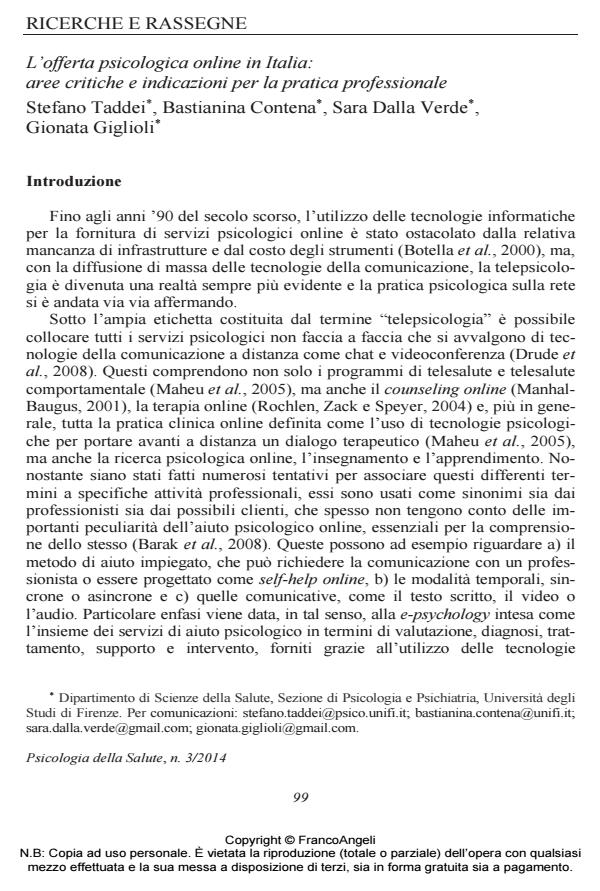Online psychological services in Italy: critical areas and recommendations for psychologists
Journal title PSICOLOGIA DELLA SALUTE
Author/s Stefano Taddei, Bastianina Contena, Sara Dalla Verde, Gionata Giglioli
Publishing Year 2014 Issue 2014/3
Language Italian Pages 21 P. 99-119 File size 129 KB
DOI 10.3280/PDS2014-003006
DOI is like a bar code for intellectual property: to have more infomation
click here
Below, you can see the article first page
If you want to buy this article in PDF format, you can do it, following the instructions to buy download credits

FrancoAngeli is member of Publishers International Linking Association, Inc (PILA), a not-for-profit association which run the CrossRef service enabling links to and from online scholarly content.
The term e-psychology refers to online psychological services for assessment, diagnosis, treatment, supporting and tests offered using Information and Communication Technologies (Drigas, Koukianakis, e Papagerasimou, 2011). Many guidelines tries to regulate this area, evaluating contents of clinical psychological websites. This article presents a description of online psychological services in Italy and verifies the adherence of online contents to guidelines. Authors have searched on Google 2 keywords "online psychological help" and "online psychotherapy". Forty-five sites of the sample are been evaluated by three independent judges through an observation form inspired to WebCounseling Site Evaluation Form (WSEF) and composed by 74 items. Results highlight some critical areas; most of all for what concern the ethical and legal issues, some problems are discussed.
Keywords: Online psychological help, e-psychology, online psychotherapy.
Stefano Taddei, Bastianina Contena, Sara Dalla Verde, Gionata Giglioli, L’offerta psicologica online in Italia: aree critiche e indicazioni per la pratica professionale in "PSICOLOGIA DELLA SALUTE" 3/2014, pp 99-119, DOI: 10.3280/PDS2014-003006